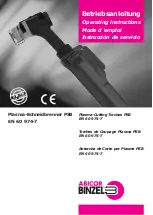
AFW RO System Manual
[1]
Revised 9/09
©Abundant Flow Water System, Inc. 2009
A Brief Technical Aspect of the Water Treatment System
The water filter system utilizes a process called reverse osmosis (RO) to purify the water. As the
heart of the purification system, the RO process uses a semi-permeable, spiral-wound membrane
to separate and remove dissolved solids, organic, pyrogens, sub-micron colloidal particles and
bacteria from the water. Feed water is delivered under pressure at about 60 PSI through the
permeator where water permeates the minute pores of the membrane and is delivered as purified
water. Impurities in the water are concentrated in the reject stream and flushed to drain. The RO
Membrane is capable of removing 90% to 97% of contaminates. The system includes pre-filters to
remove sediment and chemicals from the water, protecting and extending the life of the
membrane. The
optional
UV filter uses ultra violet light to destroy bacteria and viruses. The DI
filter is composed of a mixed bed of resin beads, some positively charged, some negatively
charged. These charged resins effectively strip the remaining impurities from the water, effectively
removing 99%+ of contaminants! The post filter gives a final polishing to ensure clean tasting
water. The water purification system consists of these stages:
1.
5-micron Sediment Pre-filter
2.
5-micron Carbon Block Pre-filter
3.
RO TFC Membrane
4. Optional
UV (Ultra Violet) Filter
5.
Pressurized Storage Tank
6.
DI Filter
7.
Inline Post Filter
8.
Faucet
The replacement filter set for the standard RO/DI Combo system is RODIFK. If the
optional
UV
filter was purchased, the replacement bulb is UVB1. If the system was ordered with specialty
and/or additional filters, or if you are unsure, call us with the name it was ordered under and we
can assist you. Replacement filters may be ordered securely online at
www.abundantflowwater.com
or by calling 1-785-735-9769. More information on filters can be
found in the maintenance section of this manual.
Pre-installation Checklist:
1. Read through and familiarize yourself with these instructions and the installation
process.
This will ensure you have the proper tools, parts, and abilities to install the system
before beginning, rather than having to stop halfway through because you are missing something
or are unable to do something.
2. Check local plumbing codes and follow any that apply to your installation.
Going against
plumbing codes is illegal, and can cause problems. AFW is not responsible for any problems
resulting from improper installation or installation that is a violation of local plumbing codes.
3. Determine installation locations, including feed water supply, drain, faucet, filter system,
and storage tank.
Ensure you have room for everything, and plan room for future filter changes.
4. Familiarize yourself with the quick connect fittings.
Your system uses quick connect fittings.
There is a collet ring at the end of the fitting that grips the tubing and holds it in place. To remove,






































